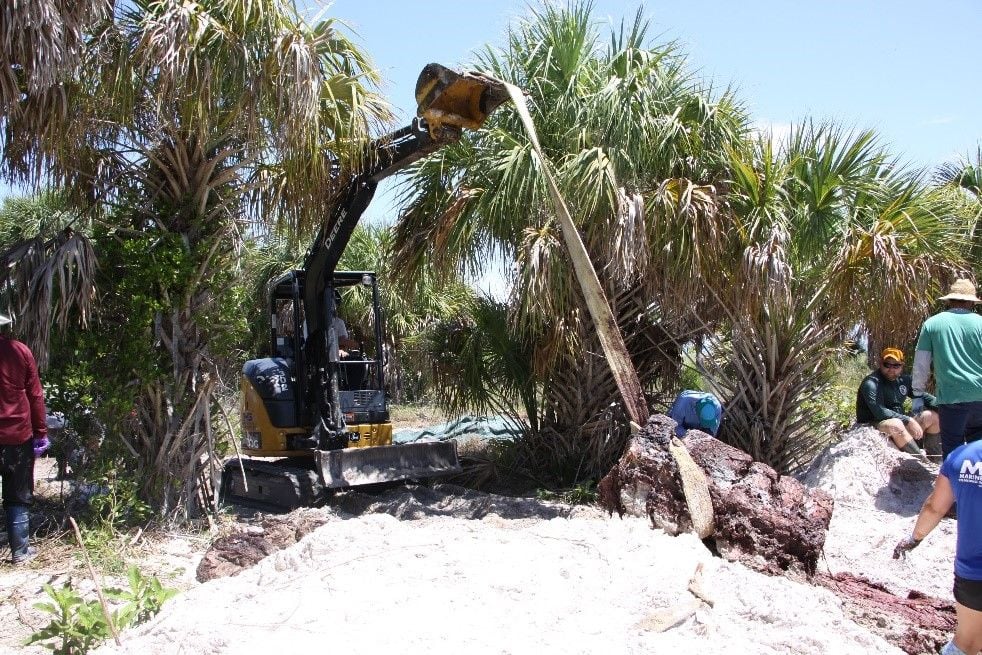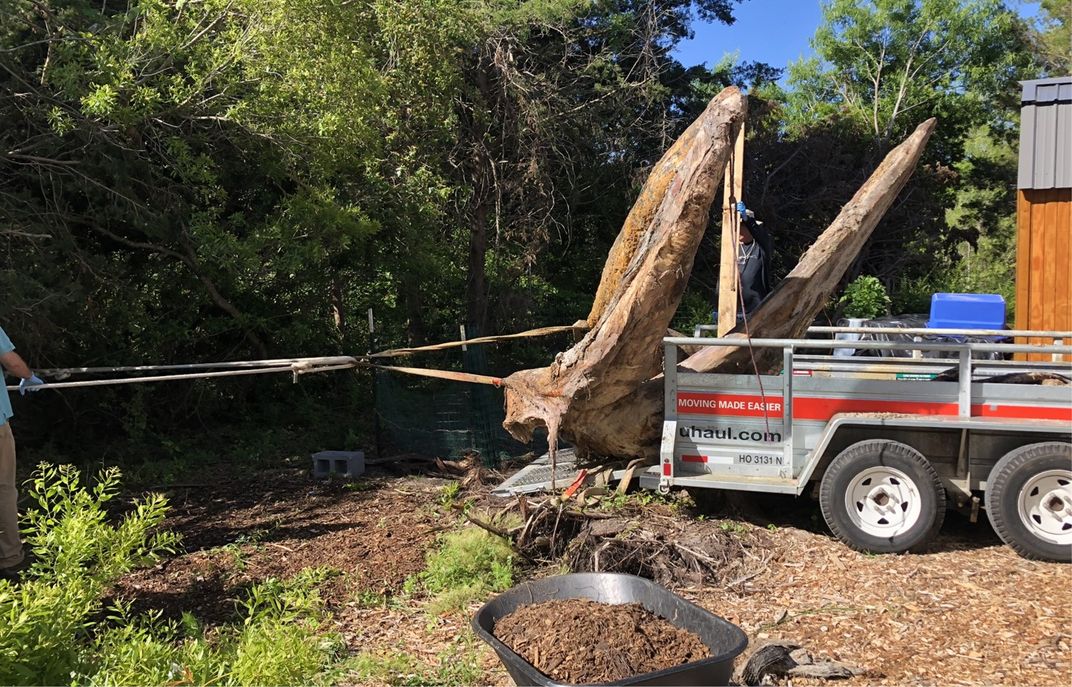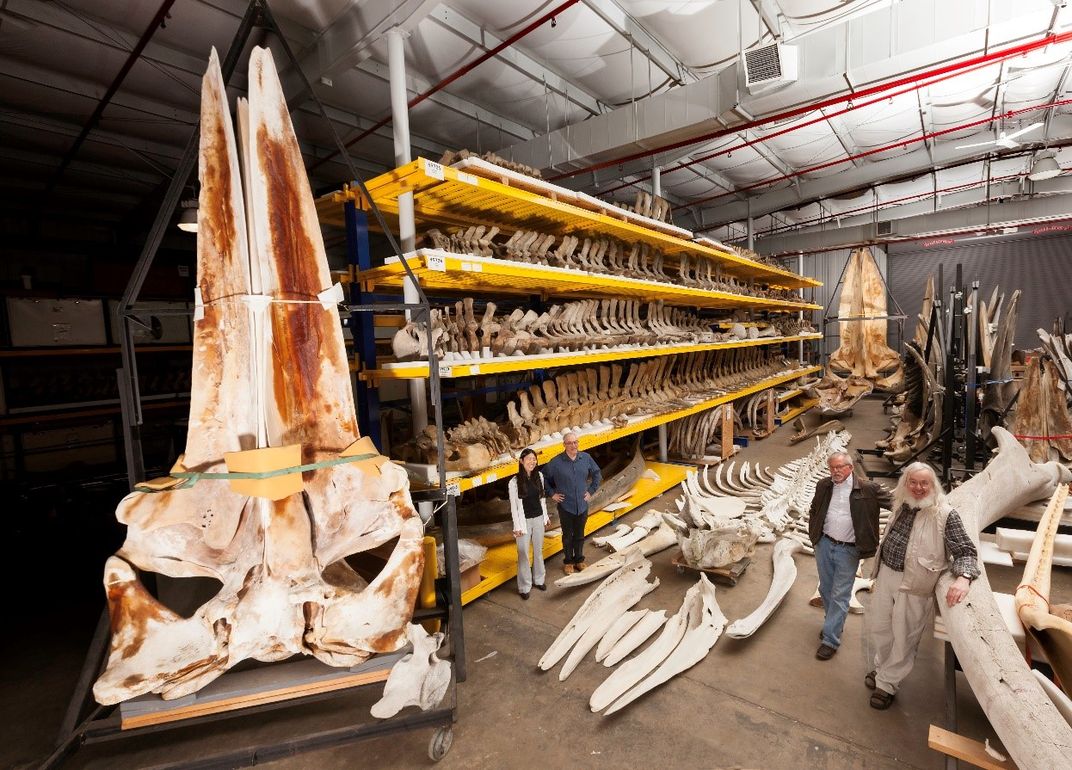NATIONAL MUSEUM OF NATURAL HISTORY
Saving This Rare Whale Skeleton was a Dirty Job
The Smithsonian welcomes a rare whale skeleton that was found dead on an island in the Florida Everglades. The specimen is expected to help scientists better define and understand the endangered species.
/https://tf-cmsv2-smithsonianmag-media.s3.amazonaws.com/blogging/featured/NOAA_Brydes_Whale.jpg)
In late January, a rare Bryde’s (pronounced broodus) whale was found dead in the Florida Everglades. The clock started ticking on what to do with the rotting corpse on an island beach frequented by tourists. After all, a whale-sized corpse creates a whale-sized mess, not to mention the stench.
Organizations including the National Oceanic and Atmospheric Administration (NOAA) recognized the value of the specimen and examined the whale, but the question remained – what do you do with a nearly 30-ton deceased whale? Without an advocate with the resources available to save it, the body may have been disposed of in the most expedient way available — towed into the ocean and allowed to sink.
But, John Ososky, the Smithsonian’s collection manager of marine mammals, was prepared to move heaven and earth — or, more literally, a stinking whale carcass and earth — to preserve the rare whale for scientific research.
The small community to which this whale belonged is a unique population that lives in the Gulf of Mexico. It is an endangered population threatened by ship strikes, oil spills and noise pollution. It is difficult to determine the exact number of whales in the community but scientists estimate that there are fewer than 100.
“When this animal beached on an island in the Everglades, I was immediately getting on the phone and was practically crying to get this specimen, because we needed a good specimen to scientifically define this community,” Ososky says. “And, given the precarious state of the population, I didn't know if we would ever get another chance.”
Scientists are debating if the whales are a sub-species of Bryde’s whale or a completely new but related species. The deceased whale is a valuable contribution to this debate. It allows the collection and study of one of the rare animals without the unthinkable — and illegal — act of collecting one from the endangered community.
The slime pit
Ososky’s pleas to claim the specimen for the Smithsonian worked. NOAA transported the whale from the island to Fort De Soto Park in St. Petersburg, Florida where the whale was buried in sand to prevent animal scavengers. But that was only a temporary solution. A whale that had previously been buried in the area turned to mush as the tide penetrated the burial site.
“We really didn't want that to happen with this one,” says Ososky. “So I told them when they put it in that sandbar, ‘I will come down and get it.’”
In May, he made good on his word. After months in sand and ocean water, the whale was going to finish decomposing at the Bonehenge Whale Center in Beaufort, North Carolina — a place that specializes in preparing whale specimens for storage.
Volunteers and staff from several organizations including the Smithsonian and NOAA dug into the sand to see what months of being buried in sand and ocean water did to the specimen.
“As we pulled all the sand off of it, it was literally in a slime pit, and it was nasty,” says Ososky.
But uncovering the specimen was the easy part. Even using excavation equipment, the specimen was unwieldly and difficult to handle. The pit was difficult to get into and out of and pieces of the whale fell apart when being pulled by the machinery. Despite the conditions and stench, the team got the whale loaded into the trailer by the end of the day.

An unusual road trip
With the whale loaded in the trailer, Ososky drove the specimen from Florida to North Carolina. He made the trip with the whale as his only companion, and as you might expect, a carcass fresh from the slime pit is not the ideal road trip buddy.
“It reeked to high heaven,” Ososky says. “Once I had it in the trailer, I was very limited in what I could do — I couldn’t park in a motel parking lot or go to a restaurant.”
So Ososky made the drive in a day, only stopping to refuel. Instead of looking for the best price when he needed gas, he was looking for vacant gas stations that he could quickly get in and out of without inflicting the stench on others.
After about nine hours, the road trip ended with more luxurious accommodations for the decomposing specimen. It was reburied. But this time, it was above ground in composting material — hay, wood chips and manure — so that the specimen would decompose neatly, leaving the bones easier and less odorous to handle and store.
“Everything about this animal was difficult, from merely collecting it to processing it, to finding a place to put it and there just wasn't another organization that was ready to step in and do that,” Ososky says. “The Smithsonian was it.”

Welcome to the Smithsonian
Now that the whale has decomposed, the bones will be carefully retrieved to complete the final leg of their journey to the Smithsonian on Thursday. As part of the Smithsonian’s whale collection, the large, difficult-to-handle skull will have a custom cradle built to hold it and help researchers handle it, and the remaining bones will be laid out in order on a shelf.

Samples taken from the specimen before it was buried are already being studied by researchers and the complete specimen will provide further insight into these rare whales. The information from this specimen is expected to help settle the debates about its status as a species. This skeleton will likely end up being the official scientific representative defining its community.
“I'm very pleased to be getting this scientifically significant whale into the collection where it will serve as a good specimen to explain conservation issues,” says Ososky.
Related stories:
Scientists Describe New Bird Species 10 Years After First Reported Sighting
Fish Detective Solves a Shocking Case of Mistaken Identity
Q&A: Sea Monsters in Our Ancient Oceans Were Strangely Familiar
Discovery and Danger: The Shocking Fishes of the Amazon’s Final Frontier

